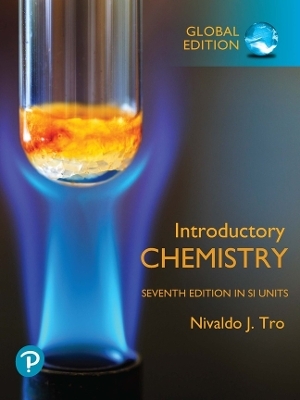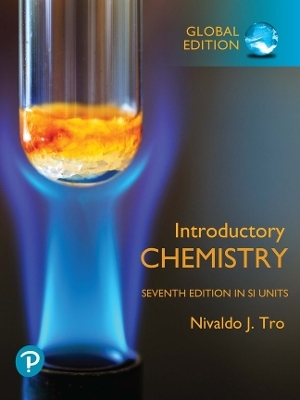
Failure Analysis of Paints and Coatings Revised Edition
Wiley-Blackwell (Hersteller)
978-0-470-74467-3 (ISBN)
- Keine Verlagsinformationen verfügbar
- Artikel merken
* Entirely devoted to the failure analysis of coatings and paints - an "excellent reference to a select market".* Latest edition contains new material on surface preparation, transfer of salt to steel from contaminated abrasive, effect of peak density on coating performance, on galvanizing, silane-modified coatings, polyurea coatings, polyaspartics, and powder coatings and on dry spray.* Balances scientific background and practical advice, giving both the theory and applications in a slim, easily readable form.* Includes case studies of laboratory tests.* Written by an author with over 25 years of experience in the paint and coatings industry.
Dwight G. Weldon, President of Weldon Laboratories, has over 25 years of experience in the paint and coatings industry. He is a coatings chemist and consultant and he is an SSPC Certified Protective Coatings Specialist. Mr Weldon has a Bachelor of Science degree from the University of Michigan (USA), a Master of Science degree from Michigan Technological University (USA) and has completed additional graduate level work in analytical chemistry at the University of Kentucky (USA). He formulated automative coatings for three years, prior to specialising in the testing and failure analysis of paints and coatings as Laboratory Director for two nationally known consulting laboratories. He has been the president-Elect of the Pittsburgh Society for Coatings Technology. In addition to routine physical and analytical testing of coatings, Mr. Weldon has worked on well over a thousand failure analysis projects involving nearly all types of paints and coatings used in numerous industrial and architectural applications. In addition to performing field and laboratory work, he routinely presents lectures on paint testing and analysis. He is a member of the American Chemical Society, SSPC - The Society for Protective Coatings, the Federation of Societies for Coatings Technology, and the American Society for Testing and Materials (ASTM).
Preface to the Revised Edition. Preface to the First Edition. Acknowledgements. 1 General Principles of Coating Formulation. 1.1 Introduction. 1.2 Binders. 1.3 Pigments. 1.4 Solvents. 1.5 Additives. 1.6 Formulation Concepts: Pigment-to-Binder Ratio. 1.7 Formulation Concepts: Pigment-Volume Concentration. 1.8 Formulation Concepts: Density, Weight Solids and Volume Solids. References. 2 Why Coatings Work and Why They Fail. 2.1 Why Coatings Work. 2.1.1 Adhesion. 2.1.2 Wetting. 2.1.3 Surface Preparation. 2.1.4 Cohesive Strength. 2.1.5 Permeability. 2.2 Why Coatings Fail. 2.2.1 Mechanical Stress. 2.2.2 Internal Stress. 2.2.3 Chemical Attack. 2.2.4 Weathering Stress. 2.2.5 Osmotic Blistering. 2.2.6 Electroendosmotic Blistering. References. 3 Pigments. 3.1 Inorganic Pigments. 3.1.1 Inorganic Colour Pigments - White. 3.1.2 Inorganic Colour Pigments - Yellow. 3.1.3 Inorganic Colour Pigments - Orange. 3.1.4 Inorganic Colour Pigments - Red. 3.1.5 Inorganic Colour Pigments - Blue. 3.1.6 Inorganic Colour Pigments - Green. 3.2 Extender Pigments. 3.2.l Silica/Silicates. 3.2.2 Calcium Carbonate. 3.2.3 Barytes. 3.3 Corrosion-Resistant Pigments. 3.4 Organic Pigments. 3.4.1 Organic Red Pigments. 3.4.2 Organic Yellow Pigments. 3.4.3 Organic Blue Pigments. 3.4.4 Organic Green Pigments. References. 4 Additives and Solvents. 4.1 Additives. 4.1.1 Anti-settling Agents. 4.1.2 Viscosity Modifiers. 4.1.3 Surfactants and Emulsifying Agents. 4.1.4 De-foaming and Anti-foaming Agents. 4.1.5 Driers. 4.1.6 Plasticizers. 4.1.7 Ultraviolet Stabilizers. 4.1.8 Anti-skinning Agents. 4.1.9 Biocides. 4.1.10 Flow-Modifying Agents. 4.2 Solvents. References. 5 Coating Types and Common Failure Modes. 5.1 Natural Resins and Oils. 5.1.1 Natural Resins. 5.1.2 Oils. 5.2 Alkyds and Epoxy Esters. 5.2.1 Alkyds. 5.2.2 Epoxy Esters. 5.3 Epoxies. 5.3.1 Amine and Amide Curing Agents for Epoxy Resins. 5.3.2 Epoxy Failure Modes. 5.4 Modifi ed Epoxies. 5.4.1 Acrylic Epoxies. 5.4.2 Coal Tar Epoxies. 5.4.3 Epoxy Phenolics. 5.5 Phenolics. 5.5.1 Resole Phenolics. 5.5.2 Novolac Phenolics. 5.5.3 Phenolic Failure Modes. 5.6 Amino Resins. 5.7 Acrylics. 5.7.1 Solution Acrylics. 5.7.2 Acrylic Latex Coatings. 5.7.3 Thermoset Acrylics. 5.8 Polyesters. 5.8.1 Saturated Polyesters. 5.8.2 Unsaturated Polyesters. 5.9 Polyurethanes. 5.9.1 Two-Component Polyisocyanate/Polyol Coatings. 5.9.2 Urealkyds. 5.9.3 Moisture-Cured Polyurethanes. 5.9.4 Polyurethane Lacquers and Dispersions. 5.9.5 Two-Component Water-Borne Polyurethanes. 5.10 Vinyls. 5.10.1 Solution Vinyls. 5.10.2 Plastisols and Organosols. 5.10.3 Vinyl Fluorides. 5.10.4 Poly(vinyl butyral). 5.10.5 Vinyl Latexes. 5.11 Bituminous Coatings. 5.12 Inorganic and Silicone-Modifi ed Coatings. 5.12.1 Silicone Coatings. 5.12.2 Silicate Coatings. 5.12.3 Polysiloxane Coatings. 5.13 Polyureas. 5.13.1 Polyaspartic Polyurea Coatings. 5.14 Powder Coatings. References. 6 Application-Related Problems. 6.1 Brush and Roller. 6.2 Spray Applications. 6.2.1 Air (Conventional) Spray. 6.2.2 Airless Spray. 6.2.3 Plural Spray. 6.2.4 Electrostatic Spray. 6.3 Flow Coating. 6.4 Roll Coating. 6.5 Powder Coating. 6.6 Coating Failures Related to Application Problems. References. 7 Field Methods. 8 Analytical Methods. 8.1 Light Microscopy. 8.2 Infrared Spectroscopy. 8.2.1 Theory. 8.2.2 Instrumentation. 8.2.3 Sample Handling. 8.2.4 Applications. 8.3 Gas Chromatography (GC). 8.3.1 Theory of GC. 8.3.2 Instrumentation. 8.3.3 Pyrolysis-GC. 8.3.4 Application of GC. 8.4 Gel Permeation Chromatography (GPC). 8.4.1 Theory. 8.4.2 Instrumentation. 8.4.3 Applications. 8.5 Ion Chromatography. 8.5.1 Theory. 8.5.2 Applications. 8.6 Scanning Electron Microscopy. 8.6.1 Imaging Theory. 8.6.2 Elemental Analysis by X-ray Spectroscopy. 8.6.3 Sample Preparation. 8.6.4 Applications of SEM-EDS. 8.7 Differential Scanning Calorimetry (DSC). 8.7.1 Theory. 8.7.2 Calibration and Sample Preparation. 8.7.3 Applications of DSC. 8.8 Miscellaneous Methods of Analysis. References. 9 Physical Methods. 9.1 Adhesion. 9.2 Flexibility and Impact Resistance. 9.3 Solvent Resistance. 9.4 Weathering Resistance. 9.5 Chemical Resistance. 9.6 Freeze-Thaw. 9.7 Application Variables. References. 10 Examples of Coating Failures. 10.1 Urethane Topcoat Disbonding from Epoxy. 10.2 Blistering of an Epoxy Tank Coating. 10.3 Cracking and Delamination of Epoxy Coating Systems on Masonry Walls. 10.4 Discolouration of Coil-Coated Aluminium Siding. 10.5 Discolouration and Delamination of Plastisol. 10.6 Delamination of Floor Coating. 10.7 Delamination of Dry-Fall Alkyd. 10.8 Coal Tar Epoxy Failure. 10.9 Splitting of Inorganic Zinc-Rich Primer. 10.10 Defects on Electro-Coated Panels. 10.11 Failure of Coated Light Poles. 10.12 Blistering of Coating on Concrete Floor, Number 1. 10.13 Blistering of Coating on Concrete Floor, Number 2. 10.14 Peeling of Paint from Metal Chairs. 10.15 Failure of Railroad Car Liner. 10.16 Failure of Calcium Sulfonate Modifi ed Alkyd Topcoat from a Bridge. 10.17 Discolouration of Furniture Lacquer. 10.18 Failure of Tank Car Lining. References. 11 The Repair of Coating Failures. Index.
| Erscheint lt. Verlag | 13.3.2009 |
|---|---|
| Verlagsort | Hoboken |
| Sprache | englisch |
| Maße | 164 x 231 mm |
| Gewicht | 676 g |
| Themenwelt | Naturwissenschaften ► Chemie |
| Technik ► Maschinenbau | |
| ISBN-10 | 0-470-74467-7 / 0470744677 |
| ISBN-13 | 978-0-470-74467-3 / 9780470744673 |
| Zustand | Neuware |
| Haben Sie eine Frage zum Produkt? |
aus dem Bereich


